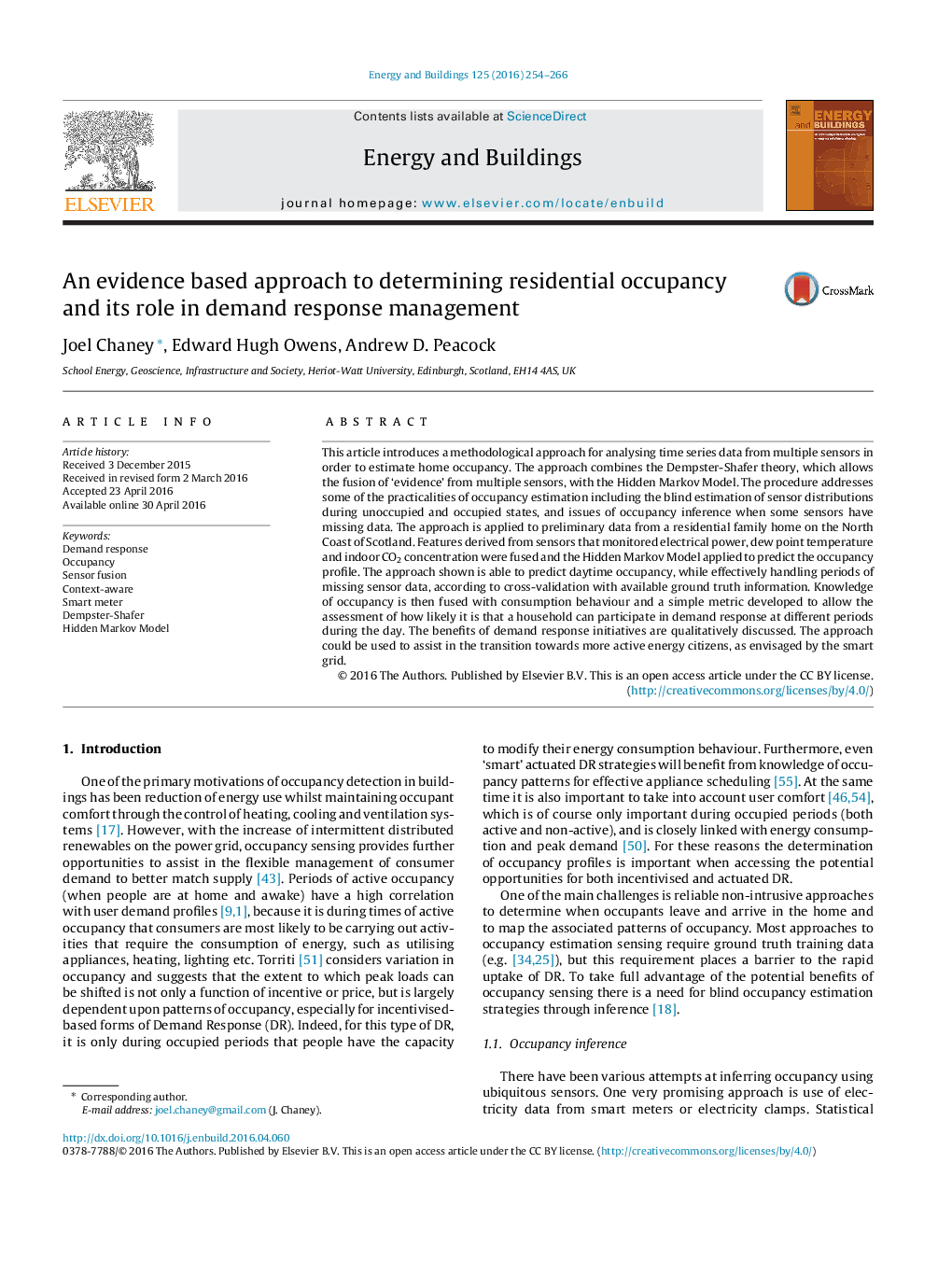| کد مقاله | کد نشریه | سال انتشار | مقاله انگلیسی | نسخه تمام متن |
|---|---|---|---|---|
| 6729939 | 504008 | 2016 | 13 صفحه PDF | دانلود رایگان |
عنوان انگلیسی مقاله ISI
An evidence based approach to determining residential occupancy and its role in demand response management
ترجمه فارسی عنوان
یک رویکرد مبتنی بر شواهد برای تعیین مسکن و نقش آن در مدیریت پاسخ تقاضا
دانلود مقاله + سفارش ترجمه
دانلود مقاله ISI انگلیسی
رایگان برای ایرانیان
کلمات کلیدی
پاسخ تقاضا، تصرف، همجوشی سنسور، زمینه آگاه، متر هوشمند، دپستر شفر، مدل مخفی مارکف،
موضوعات مرتبط
مهندسی و علوم پایه
مهندسی انرژی
انرژی های تجدید پذیر، توسعه پایدار و محیط زیست
چکیده انگلیسی
This article introduces a methodological approach for analysing time series data from multiple sensors in order to estimate home occupancy. The approach combines the Dempster-Shafer theory, which allows the fusion of 'evidence' from multiple sensors, with the Hidden Markov Model. The procedure addresses some of the practicalities of occupancy estimation including the blind estimation of sensor distributions during unoccupied and occupied states, and issues of occupancy inference when some sensors have missing data. The approach is applied to preliminary data from a residential family home on the North Coast of Scotland. Features derived from sensors that monitored electrical power, dew point temperature and indoor CO2 concentration were fused and the Hidden Markov Model applied to predict the occupancy profile. The approach shown is able to predict daytime occupancy, while effectively handling periods of missing sensor data, according to cross-validation with available ground truth information. Knowledge of occupancy is then fused with consumption behaviour and a simple metric developed to allow the assessment of how likely it is that a household can participate in demand response at different periods during the day. The benefits of demand response initiatives are qualitatively discussed. The approach could be used to assist in the transition towards more active energy citizens, as envisaged by the smart grid.
ناشر
Database: Elsevier - ScienceDirect (ساینس دایرکت)
Journal: Energy and Buildings - Volume 125, 1 August 2016, Pages 254-266
Journal: Energy and Buildings - Volume 125, 1 August 2016, Pages 254-266
نویسندگان
Joel Chaney, Edward Hugh Owens, Andrew D. Peacock,
